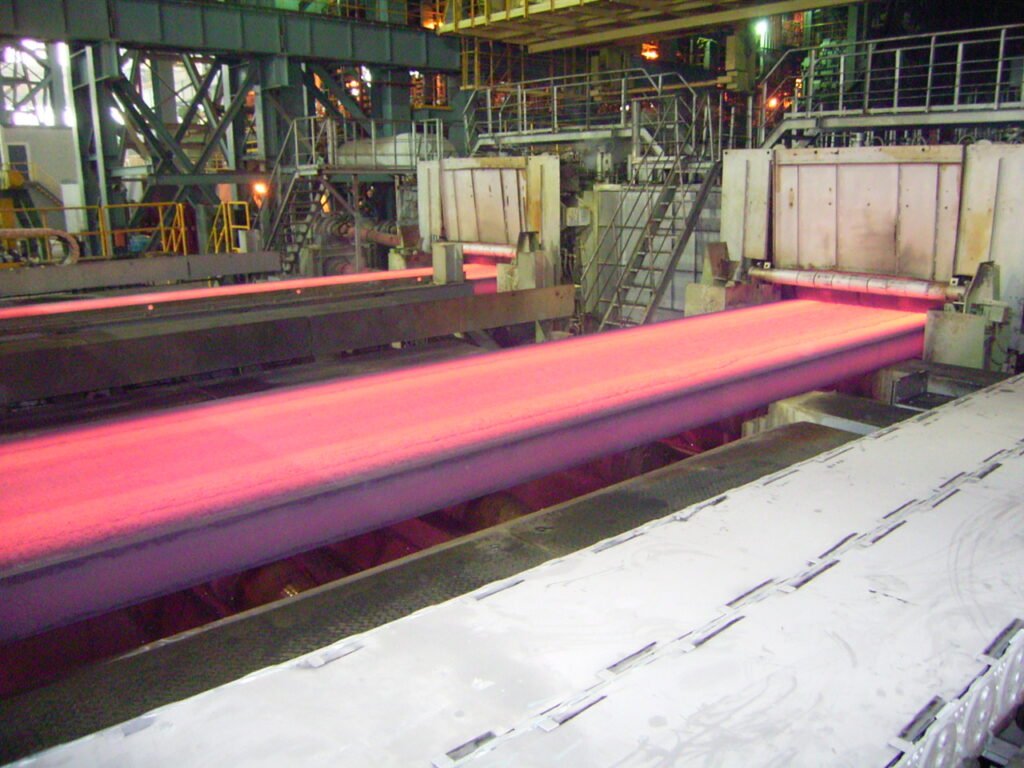In demanding B2B manufacturing environments, you face delays from inconsistent components that disrupt assembly lines and spike operational costs in sectors like automotive and electronics. These challenges often result in excessive rework, eroded profit margins, and lost market share as competitors deliver faster. Aluminum die casting resolves this by injecting molten aluminum into steel molds under high pressure to produce precise, high-volume parts that ensure reliability and efficiency. An aluminum die casting part represents a durable solution for complex designs, helping you achieve superior quality without the headaches of traditional methods.
What is Aluminum Die Casting?
Aluminum die casting is a process that forces molten aluminum into reusable steel molds to create intricate metal components with exceptional precision. When producing an aluminum die casting part , manufacturers heat aluminum alloys to liquid form and inject them at high speeds, allowing for rapid solidification into shapes that demand tight tolerances. This method stands out for its ability to handle high volumes while maintaining consistency across batches.
You benefit from parts that integrate seamlessly into assemblies, reducing assembly time.
How Does the Basic Process Work?
The process begins with melting aluminum, followed by injection, cooling, and ejection from the die. Here’s the kicker—high pressure ensures every detail fills perfectly, avoiding common defects like voids.
- Melting occurs at 660-700°C for uniform flow.
- Injection uses 1,000-20,000 psi to capture fine features.
- Cooling channels solidify parts in seconds for strength.
Why Use It for Precision Parts?
It excels in creating lightweight yet strong components that other casting methods can’t match efficiently. You might wonder—what sets it apart from alternatives? The reusable dies enable scalability you need for B2B demands.
Key Takeaway: Streamlined Production Benefits
You gain faster cycles and lower waste, cutting costs by up to 30% in high-volume runs and boosting your operational edge.
| Stage | Key Action | Benefit to Part | |
|---|---|---|---|
| Melting | Heat to liquid | Uniform alloy | |
| Injection | High-pressure fill | Precise shapes | |
| Ejection | Quick release | Smooth finish |
This table shows how each stage enhances the aluminum die casting part’s reliability for your projects.
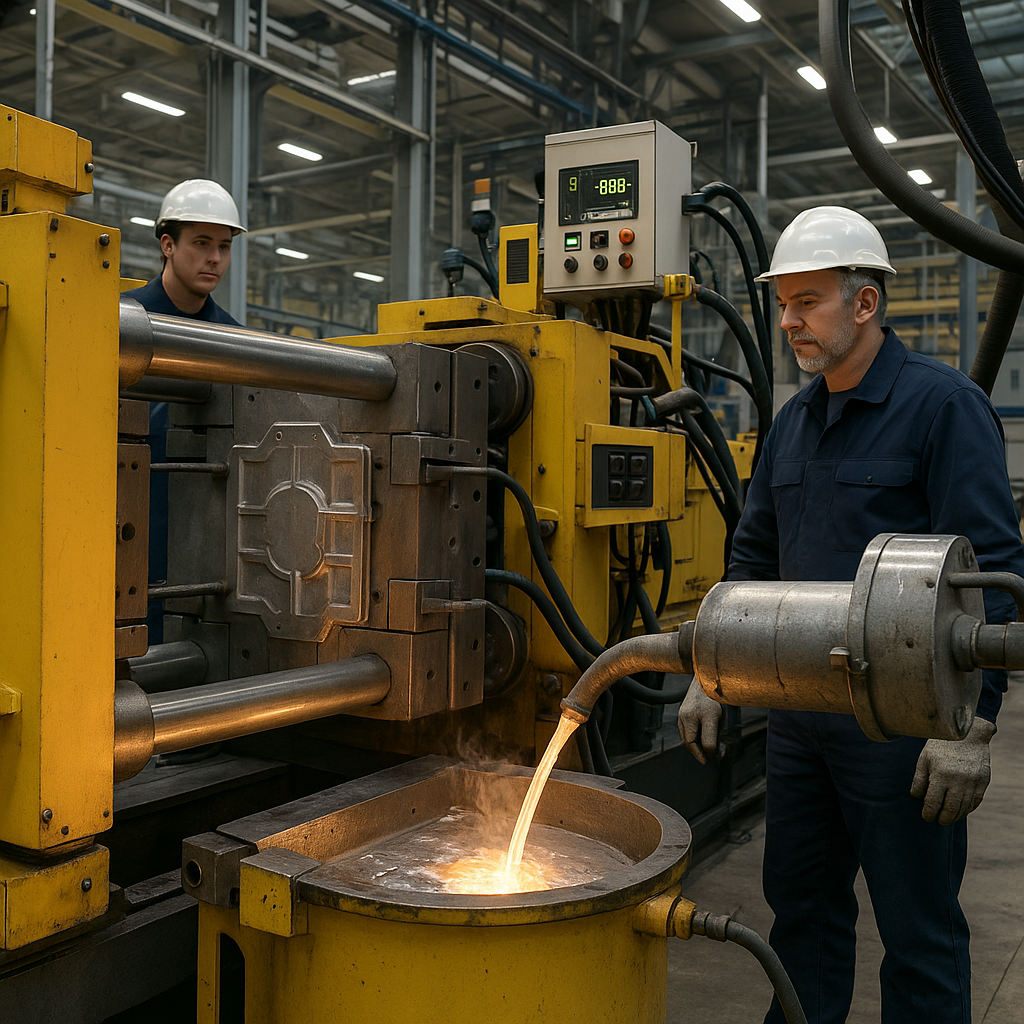
How Does an Aluminum Die Casting Part Form in the Die?
An aluminum die casting part forms when molten aluminum solidifies inside a precision die after high-pressure injection. In creating an aluminum die casting part , the metal flows into mold cavities designed for your specifications, capturing intricate details without distortion. This results in components ready for immediate use in demanding applications.
The cycle repeats quickly, supporting your need for consistent output.
What Role Does Pressure Play?
Pressure forces the alloy into tight spaces, ensuring complete mold fill. But why so intense? It prevents air entrapment, yielding denser parts you can trust.
- Pressures range from 1,000 psi for simple shapes.
- Up to 20,000 psi handles complex geometries.
- Results in minimal porosity for durability.
How Does Cooling Affect Quality?
Rapid cooling via die channels locks in shapes while building strength. Ready for more? You control rates to avoid cracks, tailoring to your design.
Key Takeaway: Enhanced Durability for You
You receive parts with superior mechanical properties, reducing failures and extending product life in your assemblies.
| Element | Function | Impact on Part | |
|---|---|---|---|
| Pressure | Mold filling | Density boost | |
| Cooling | Solidification | Warp prevention | |
| Ejection | Release | Surface quality |
These factors directly improve the aluminum die casting part’s performance in your operations.
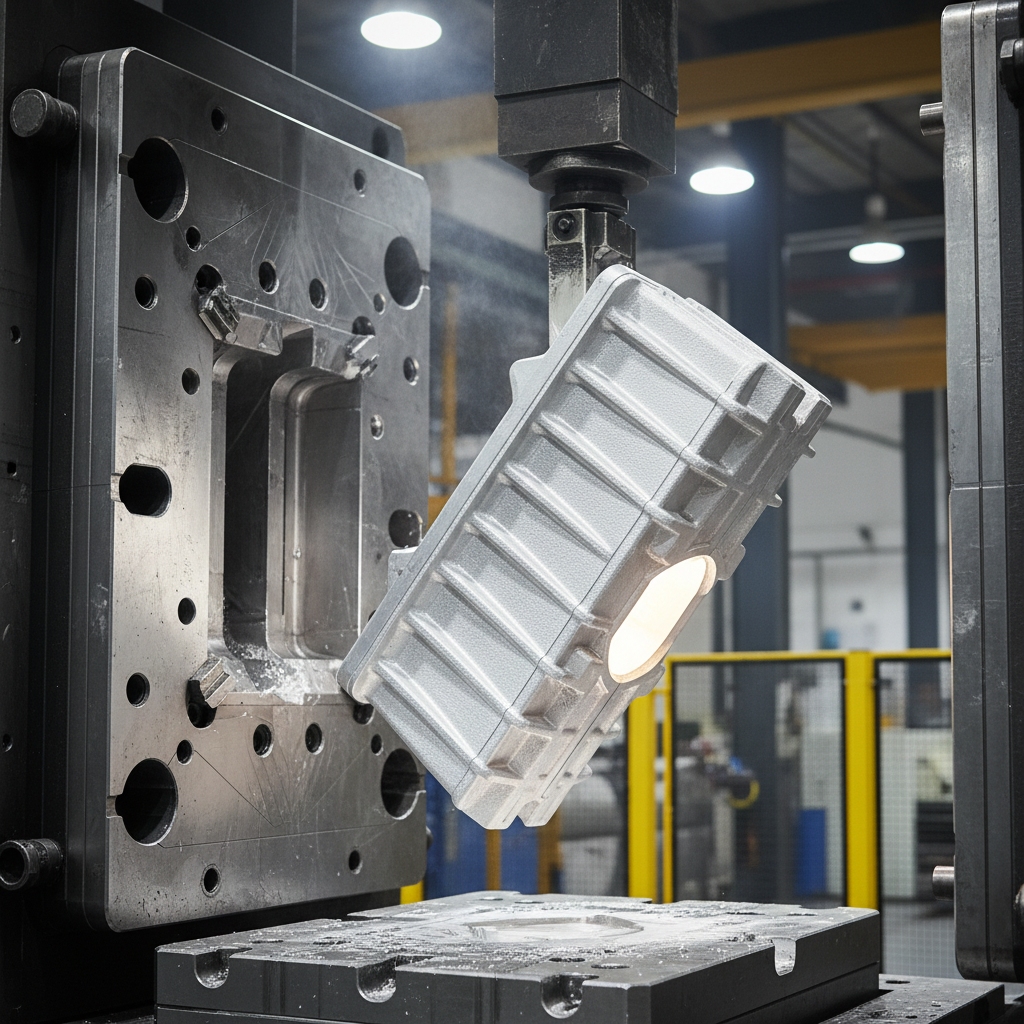
What Advantages Does an Aluminum Die Casting Part Offer?
An aluminum die casting part offers lightweight strength, tight tolerances, and cost efficiency for complex components. When specifying an aluminum die casting part , you get corrosion resistance and thermal conductivity that outperform heavier materials in dynamic uses. These traits make it ideal for high-volume production where precision matters.
You avoid excessive machining, saving time and resources.
Can It Handle Intricate Designs?
Yes, it captures thin walls and fine details effortlessly. The real edge—you achieve geometries impossible with basic casting, like integrated threads.
- Supports walls as thin as 0.5mm.
- Tolerances reach ±0.002 inches.
- Reduces assembly steps for efficiency.
Why Prioritize Its Durability?
Aluminum’s properties resist wear while keeping weight low. Think about it—in harsh environments, you extend part lifespan without added protection.
Key Takeaway: Cost Savings for Your Business
You cut material and labor costs by 20-30%, gaining a competitive advantage through reliable, scalable parts.
| Advantage | Vs. Other Methods | Your Gain | |
|---|---|---|---|
| Precision | Tighter tolerances | Fewer rejects | |
| Weight | Lighter than steel | Better efficiency | |
| Scalability | High-volume ready | Lower per-unit cost |
This highlights how the aluminum die casting part optimizes your manufacturing ROI.
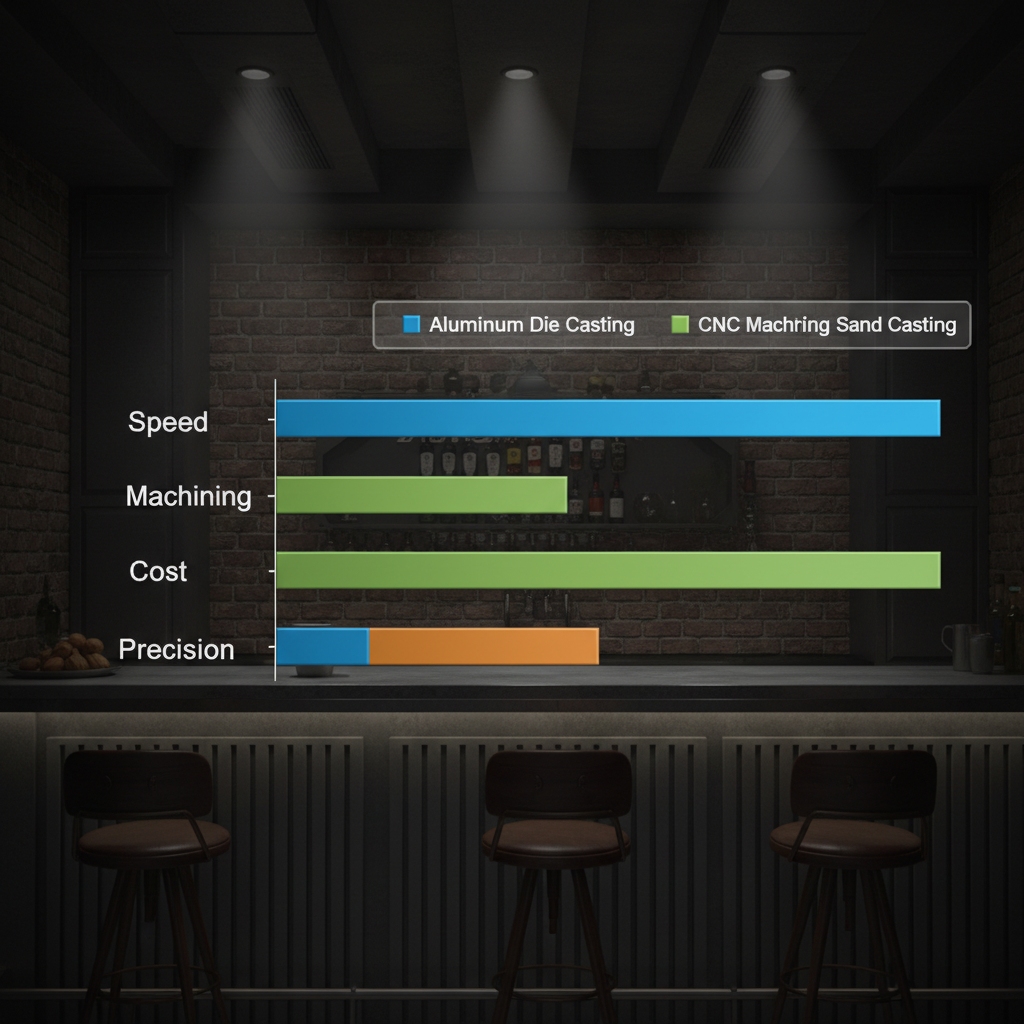
Why Focus on Design for an Aluminum Die Casting Part?
Design considerations like wall thickness ensure an aluminum die casting part solidifies evenly without defects. For an aluminum die casting part , uniform sections prevent shrinkage issues, aligning with your performance needs. Proper planning from the start minimizes revisions.
You end up with parts that meet specs on the first run.
What Makes Wall Thickness Critical?
Uniform thickness, ideally 1-3mm, promotes balanced cooling. Here’s why it counts—inconsistencies lead to porosity you want to avoid.
- Thinner walls save material.
- Simulations predict optimal sizes.
- Balances strength and weight for you.
Where Should Parting Lines Go?
Strategic placement eases ejection without marring surfaces. You might wonder—how does this affect aesthetics? Hidden lines keep your parts looking professional.
- Angle drafts at 1-2 degrees.
- Avoid functional areas.
- Integrate with gates for flow.
Key Takeaway: Easier Manufacturing for You
You reduce scrap rates by 25%, streamlining production and accelerating your time to market.
| Design Factor | Recommendation | Benefit | |
|---|---|---|---|
| Wall Thickness | 1-3mm uniform | Defect reduction | |
| Parting Line | Hidden placement | Clean release | |
| Draft Angle | 1-2 degrees | Smooth ejection |
Effective design elevates the aluminum die casting part’s manufacturability for your needs.
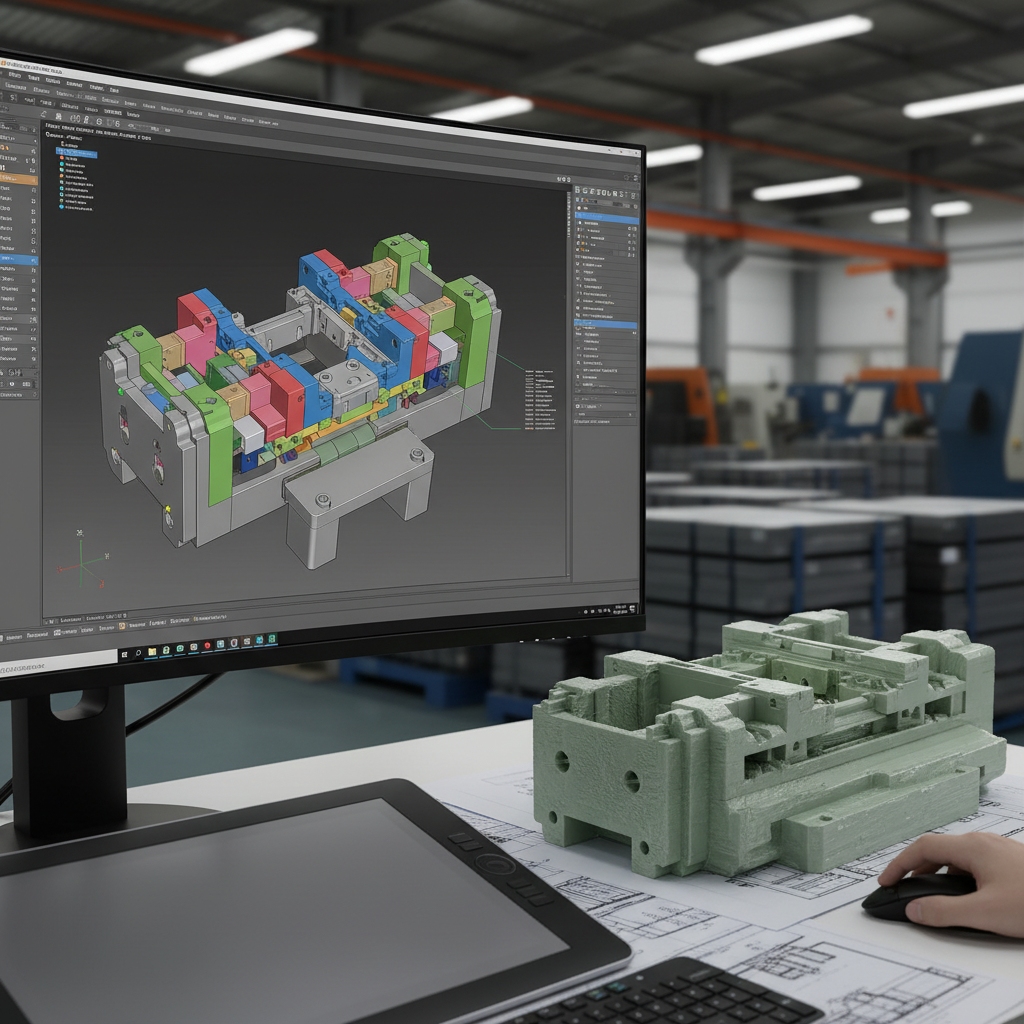
How Does an Aluminum Die Casting Part Compare to Other Castings?
An aluminum die casting part surpasses sand and permanent mold castings in precision and speed for high volumes. Compared to those, an aluminum die casting part achieves finer tolerances and smoother finishes, suiting your complex requirements. It trades higher tooling costs for long-term savings.
You select it when accuracy drives your success.
What Differentiates It from Sand Casting?
High pressure yields better detail than gravity pouring. But wait—sand works for prototypes, but you need die for scale.
- Tolerances: ±0.002″ vs. ±0.030″.
- Finishes smoother by far.
- Faster cycles benefit your throughput.
Is It Better Than Permanent Mold?
Yes, for intricate shapes and rates over 10,000. The difference? You get precision without speed trade-offs.
- Stronger fills in dies.
- Reusable for volumes.
- Less post-processing required.
Key Takeaway: Ideal for Your Precision Demands
You minimize finishing costs and ensure consistency, enhancing your supply chain reliability.
| Casting Type | Tolerance Level | High-Volume Cost | |
|---|---|---|---|
| Die Casting | ±0.002″ | Lowest per unit | |
| Sand | ±0.030″ | Higher labor | |
| Permanent Mold | ±0.015″ | Moderate tooling |
Die casting positions the aluminum die casting part as your go-to for efficiency.

What Finishing Options Suit an Aluminum Die Casting Part?
Finishing options like coating and peening enhance an aluminum die casting part’s surface and longevity. After producing an aluminum die casting part , minimal machining followed by treatments protects against wear. You customize to meet industry standards.
This keeps your components performing optimally.
How Much Machining Is Needed?
Often just trim and drill for features. You see—net shapes save you effort.
- CNC for precise additions.
- Peening for fatigue resistance.
- Keeps tolerances intact.
Why Choose Powder Coating?
It provides uniform protection and appeal. Next up—you apply it for corrosion defense in tough settings.
- Thickness around 100µm.
- Chip-resistant finish.
- Eco-friendly application.
Key Takeaway: Tailored Performance for You
You extend part life by 20%, reducing maintenance and supporting your quality goals.
| Finishing Method | Main Use | Durability Gain | |
|---|---|---|---|
| Machining | Feature addition | Precision hold | |
| Powder Coating | Surface protection | Corrosion block | |
| Peening | Stress relief | Fatigue cut |
Finishing refines the aluminum die casting part to fit your exact applications.

Which Alloys Fit an Aluminum Die Casting Part Best?
Alloys like A380 make an aluminum die casting part versatile for various loads. Selecting an aluminum die casting part involves matching properties to your use, such as strength or resistance. Common choices balance castability and performance.
You pick based on environmental demands.
What Defines A380’s Versatility?
It offers solid strength at 45ksi yield. Wondering about alternatives? You use it for general automotive needs.
- Copper content boosts mechanics.
- Flows well into dies.
- Suits 80% of applications.
How Does A360 Aid Corrosion Resistance?
Low copper prevents pitting in moist areas. Key point—you rely on it for hydraulics.
- Silicon under 10% for fluidity.
- Excels in salt exposure.
- Maintains integrity longer.
Key Takeaway: Optimized Choices for You
You achieve targeted durability, minimizing replacements and costs in your operations.
| Alloy | Strength Trait | Typical Application | |
|---|---|---|---|
| A380 | Balanced yield | General components | |
| A360 | Anti-corrosion | Fluid systems | |
| B390 | Wear hardness | Engine parts |
Alloy selection ensures the aluminum die casting part meets your performance criteria.
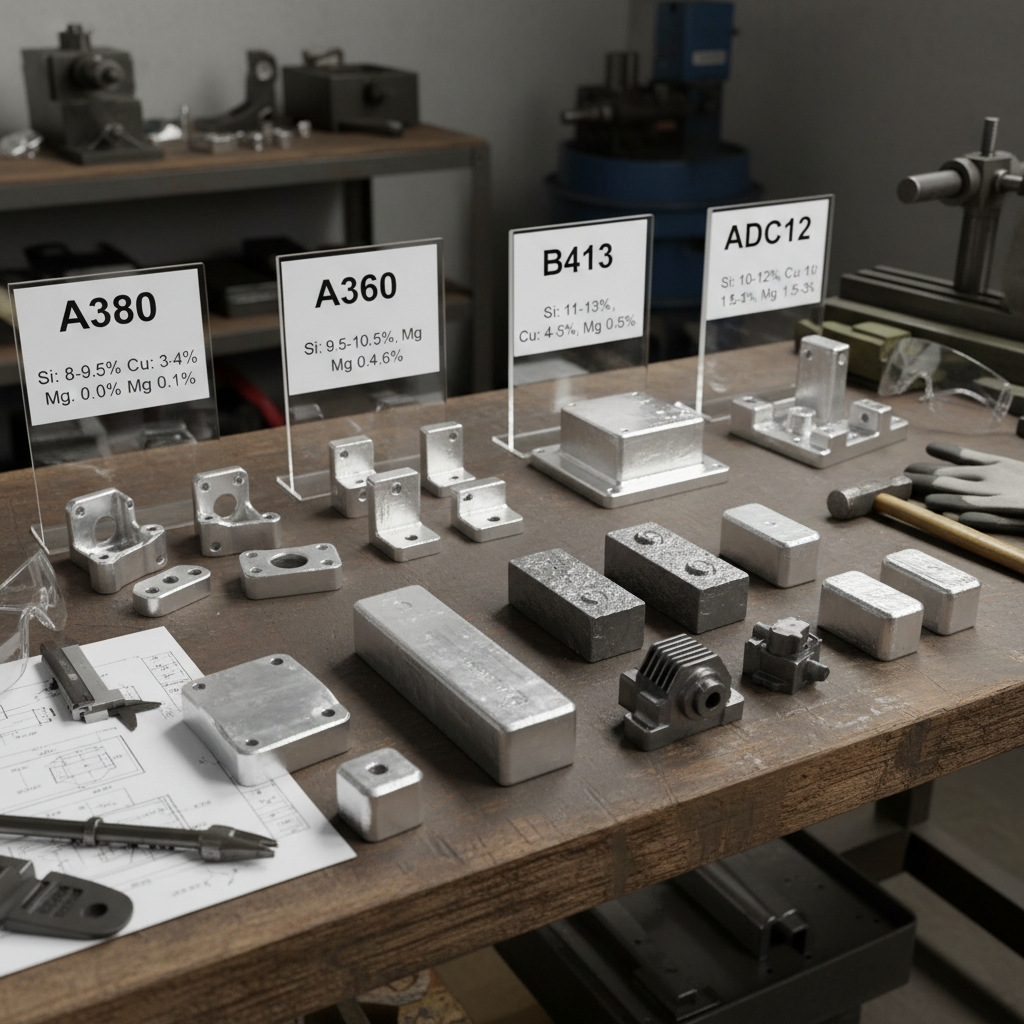
What Role Do Aluminum Die Casting Parts Play in Automotive?
Aluminum die casting parts lighten vehicles and improve efficiency in engines and transmissions. In automotive, an aluminum die casting part reduces weight by 10-15%, aiding fuel economy. You integrate them for seamless performance.
This drives innovation in your designs.
Why Use Them in Engine Blocks?
They handle pressures with complex channels. Imagine this—you cut mass for better mileage.
- Strength-to-weight excels.
- Cooling fins built-in.
- Lowers emissions effectively.
Can They Manage Heat in Transmissions?
Thermal conductivity dissipates heat at 200W/mK. But here’s the benefit—you gain reliability under stress.
- Withstands 300°C cycles.
- Precision fits reduce noise.
- Extends service intervals.
Key Takeaway: Efficiency Boost for You
You save on fuel and maintenance, positioning your vehicles as market leaders.
| Automotive Use | Key Benefit | Overall Impact | |
|---|---|---|---|
| Engine Blocks | Weight reduction | Economy gains | |
| Transmissions | Heat management | Durability up |
These roles make the aluminum die casting part essential for your automotive advancements.
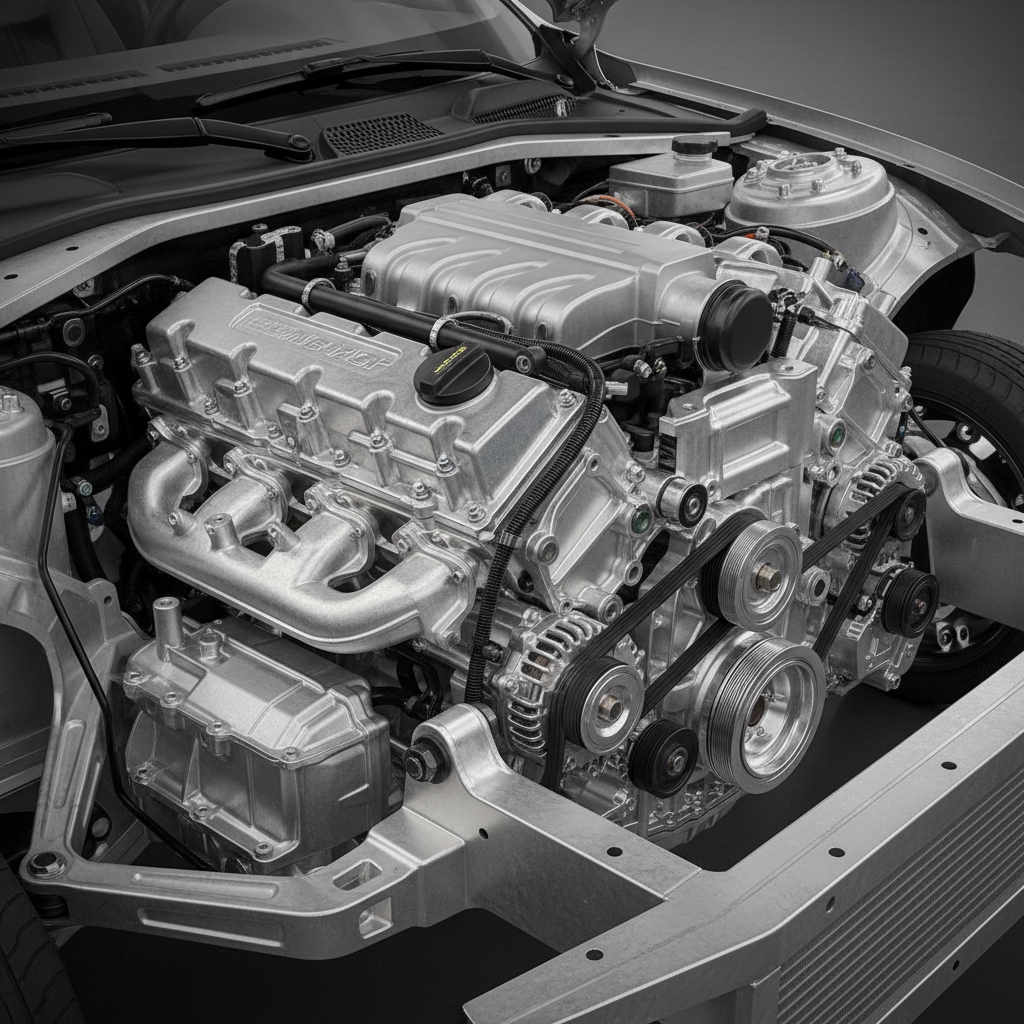
How Cost-Effective Are Aluminum Die Casting Parts at Scale?
Aluminum die casting parts become highly cost-effective beyond 5,000 units due to die amortization. For an aluminum die casting part , initial tooling pays off with per-unit drops to $0.50 in large runs. You calculate ROI based on volume.
This scales your profitability.
What Influences Upfront Expenses?
Tooling complexity drives
50k−50k-50k−
100k costs. The payoff? You recover in high outputs.
- Steel dies last 100,000 cycles.
- Design tweaks add value.
- Simulations lower risks.
Why Do Lifecycle Costs Drop?
Minimal waste and fast cycles recycle 95%. So, calculate this—you see savings over alternatives.
- 30-second production.
- Less machining needed.
- Predictable budgeting aids.
Key Takeaway: Smart Economics for You
You achieve 40% lower costs long-term, freeing resources for growth.
| Cost Aspect | Initial Outlay | Scale Savings | |
|---|---|---|---|
| Tooling | 50k−50k-50k−100k | Amortized fast | |
| Per-Unit | N/A | Down to $0.50 | |
| Waste | Low | 95% recyclable |
Cost dynamics favor the aluminum die casting part for your high-volume strategies.

What Quality Measures Secure an Aluminum Die Casting Part?
Quality measures like inspections ensure an aluminum die casting part meets exact specs without flaws. Implementing an aluminum die casting part involves checks from alloy to finish. You build trust through rigorous standards.
This safeguards your reputation.
How Do Inspections Detect Issues?
3D scanning spots dimensional errors early. Don’t overlook—CT reveals internal voids you can’t see.
- Accuracy to 0.001 inches.
- Spectrometry verifies composition.
- Non-destructive for efficiency.
Why Partner on Engineering Reviews?
Iterations cut defects by 30%. Real talk—you align designs proactively.
- Prototypes test feasibility.
- ISO compliance traces all.
- Feedback refines quickly.
Key Takeaway: Reliable Outputs for You
You minimize rework and risks, delivering consistent quality to clients.
| Quality Check | Technique | Your Advantage | |
|---|---|---|---|
| Dimensional | 3D Scan | Exact fits | |
| Internal | CT Imaging | Hidden flaw catch | |
| Material | Spectrometry | Purity assured |
These controls make the aluminum die casting part a dependable choice for you.
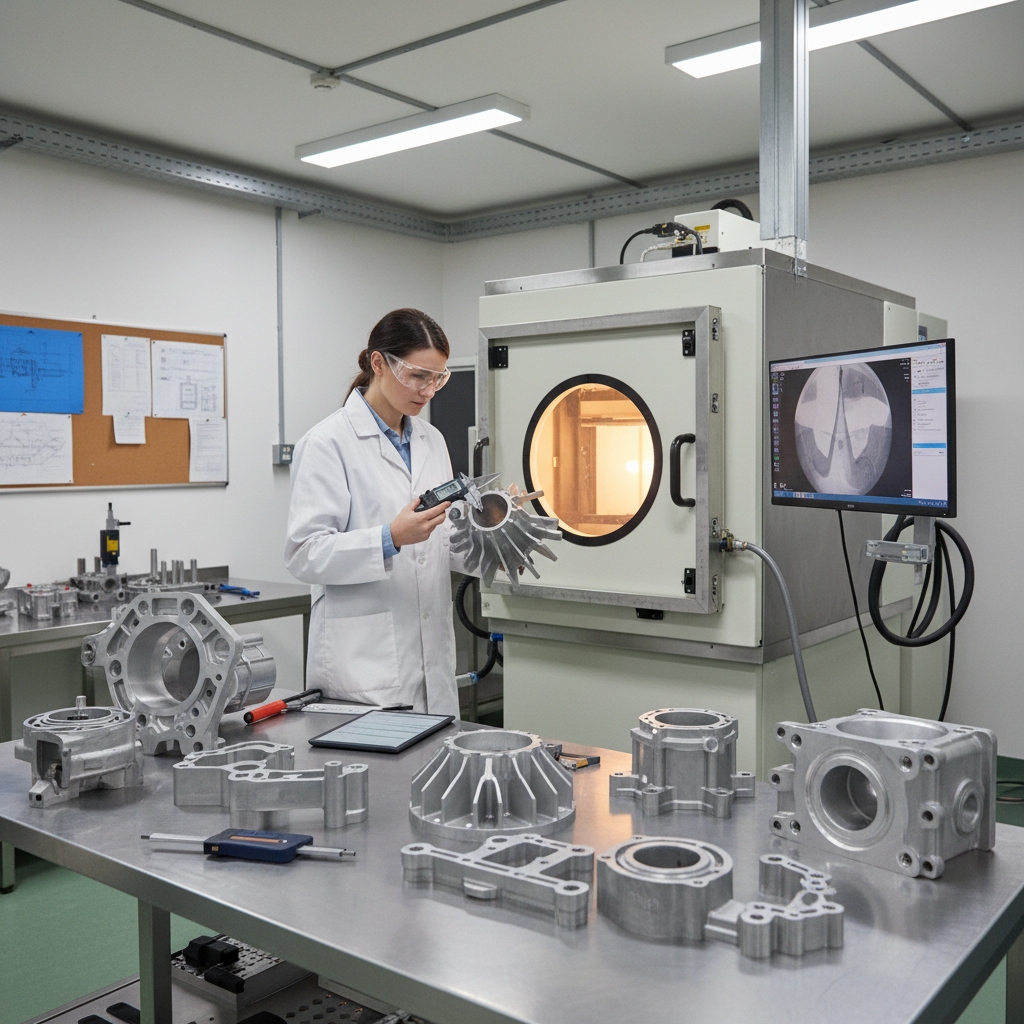
In summary, the aluminum die casting part delivers precision and efficiency to overcome manufacturing hurdles in your B2B operations. From intricate designs to scalable production, it addresses quality pains while offering durable solutions through our expertise in alloys, finishing, and processes. Contact us today at https://precisionvast.com/ to solve your component challenges—our offerings drive precision innovation, empowering you to lead with reliable, high-performance parts that fuel future success.
FAQ
Can I use an aluminum die casting part for prototypes? No, high tooling costs make it unsuitable for low runs under 1,000—opt for alternatives like 3D printing instead. Reasons include die expenses exceeding $20k that only amortize in volume, ensuring better ROI for production phases while keeping your prototyping agile.
What’s the best alloy for an aluminum die casting part in corrosive environments? A360 is optimal due to its low copper content that resists pitting effectively. Reasons encompass superior performance in salt spray tests by 20% over A380, plus excellent castability for complex shapes you need in hydraulics or marine apps.
How do I know if an aluminum die casting part fits high-volume production? Yes, if your needs exceed 10,000 units with tight tolerances—it’s designed for that scale. Reasons involve reusable dies dropping costs 40% per unit, combined with low waste for sustainability that aligns with your B2B efficiency goals.
What’s the typical lead time for an aluminum die casting part? 4-12 weeks depending on complexity, with simpler designs faster via stock tools. Reasons include die creation taking 6-8 weeks, but parallel steps like prototyping shorten overall timelines for your urgent projects.
Can aluminum die casting parts be recycled effectively? Yes, at 95% recyclability, they support green initiatives without quality loss. Reasons feature easy remelting of scrap that cuts virgin material use by 80%, fitting your sustainable supply chain requirements perfectly.



